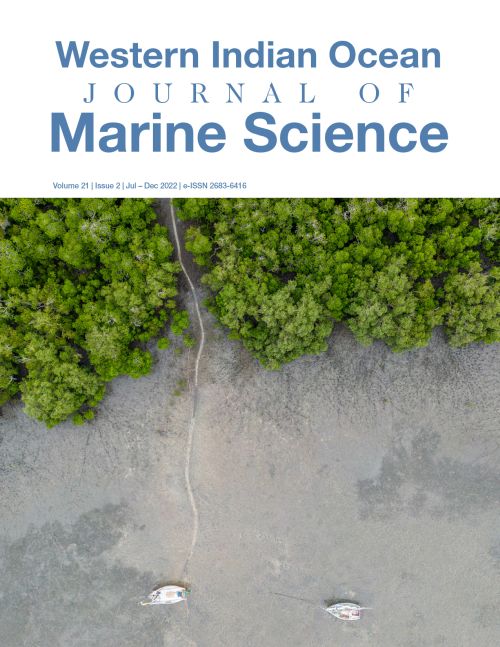Main Article Content
Seasonality of Fish Juvenile Community Structure and Diversity in a Tropical Seagrass Meadow of Watamu, Kenya
Abstract
Seagrass are important marine habitats that function as nursery grounds for juvenile fish. Human activities and other natural factors have contributed to their decline, and this has compromised their role as nurseries, specifically in non-continuous patchy seagrass beds. In this study, juvenile fish abundance from tropical seagrass beds of Watamu were examined, while testing the hypothesis that seagrass cover and seasonality influenced juvenile fish abundance
and diversity. Two sampling stations were identified, Watamu Blue Lagoon (WBL) and Watamu Beach (WB), based on seagrass cover, and were sampled for a period of 10 months that included two south-east monsoon (SEM) and two north-east monsoon (NEM) seasons. Monthly samples were collected by seining within the shallow seagrass habitats of WBL and WB. A total of 31 juvenile fish families were obtained, the dominant taxa being Lutjanidae and Siganidae. Seasonal and interannual variability in juvenile abundance was observed over the two years (p<0.05); year 1 recorded higher abundance than year 2, specifically during the SEM. In year 2 a higher mean abundance was recorded during the NEM when compared to the SEM. Chlorophyll a (p<0.05) and salinity (p<0.05) were found to significantly influence juvenile fish abundance.






